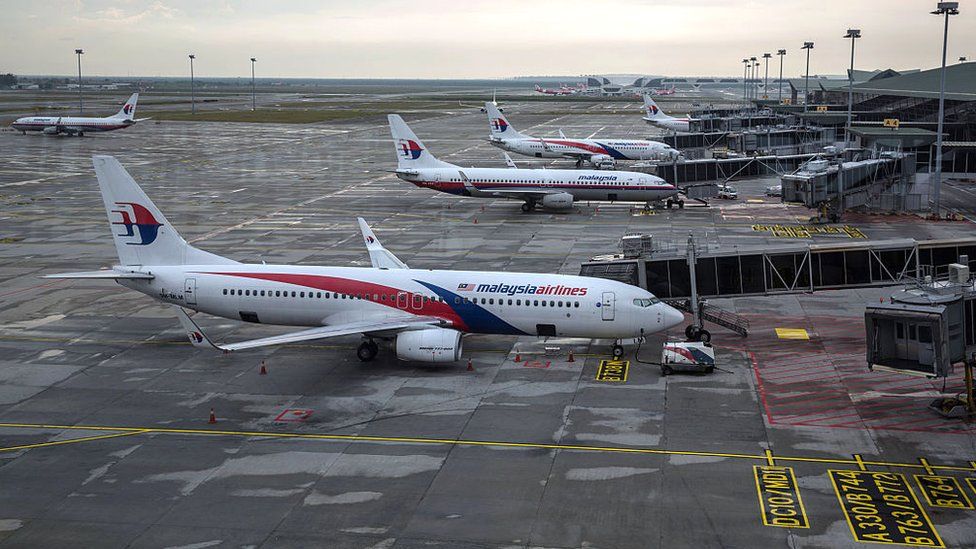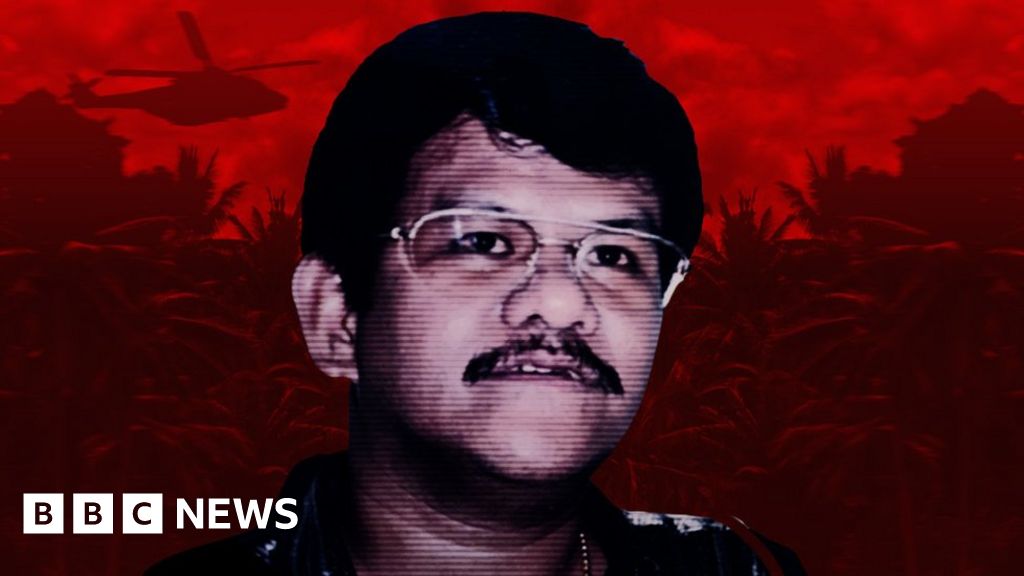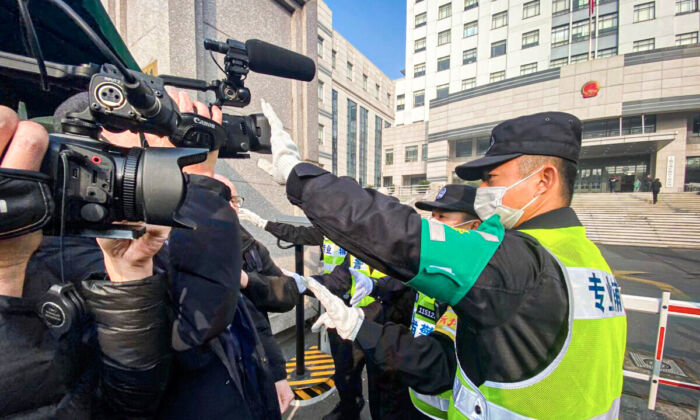 Image source, Getty Images
Image source, Getty Images
By Frances Mao
in Singapore
Ten years ago this month, Malaysia Airlines was devastated by the twin disasters of MH370 and MH17.
Flight MH370 from Kuala Lumpur to Beijing disappeared over the Indian Ocean on 8 March 2014 with 239 people on board. Despite millions of dollars spent on the largest search in aviation history the plane has still not been found.
The airline was still reeling from that tragedy when in July of the same year, MH17 was shot down by a Russian-controlled armed group above conflict-ridden Ukraine. All 283 passengers and 15 flight crew were killed.
There had been 160 planes flying over the war zone that day but it was MH17 that was hit.
An airline losing two passenger jets in five months was an event that remains unprecedented to this day.
Many saw it like a curse, on an airline which had operated for 70 years largely unscathed.
Malaysia Airlines had long enjoyed an excellent safety record and had even won awards for service. It had a huge fleet flying all over the world from its base in Kuala Lumpur.
But after the calamities in 2014, passengers got the jitters. Customers switched to other airlines and media reports from the time showed near-empty flights on longer routes.
Last year, though, its chief executive said the company was on track to see its first annual net profit in a decade.
The airline did not respond to the BBC's questions but analysts say a slew of route cuts helped shore up its finances, while rebranding with an emphasis on safety has won back customers.
"It is now a leaner, more focused company - albeit one with somewhat reduced ambitions," says aviation industry watcher Greg Waldron.
Today, Malaysia Airlines continues to cross the skies, transporting millions of passengers around the world each year. So how did it keep going?
Malaysia to the rescue
Immediately after the second disaster, the Malaysian government sprang into action. The airline was the national flag carrier with more than 20,000 employees and its stock market value had plunged.
The country's sovereign wealth fund - Khazanah Nasional - stepped in. At that point, it already owned 69% of the company.
A month after the MH17 disaster, it bought out the airline's other shareholders, delisted the firm from the stock exchange, created a new company and declared the old firm bankrupt.
Malaysia Airlines was fully nationalised - the first key step to saving the company.
Under the government's recovery plan - named "Rebuilding a National Icon" - the cost of tickets was also slashed while accountants took a fine-toothed comb to the company's operations.
Prior to 2014, the airline had already begun to cut long, unprofitable routes to places like North and South America and South Africa.
After 2014 it shed these routes in earnest, axing several established long-haul flights, including those to New York and Stockholm. It eventually cut all of its European destinations except for London.
Today, Heathrow remains Malaysia Airlines' only European stop - and that has become a key money-making route, particularly in the wake of Covid.
For the last few years, it has been the only airline running a non-stop flight to London from Kuala Lumpur after British Airways dropped the route during the pandemic.
"With a monopoly like that, on a premiere route, an airline can charge a lot of money, particularly to people who are not price-sensitive and must travel quickly," says aviation analyst Brian Sumers.
The company also took advantage of the global aviation pause during Covid to restructure its debts - but kept its planes in the air, being one of the key carriers operating repatriation flights from Europe to Asia.
Other airlines in Asia and Europe retired planes during the pandemic, so they were not ready for the quick bounce-back in demand.
Malaysia Airlines, on the other hand, had a head start when borders re-opened - and it made the most of that advantage, analysts say.
The Asia-Pacific region has the busiest routes in the world - claiming seven of the top 10 international routes - including the most-travelled one, from Kuala Lumpur to Singapore.
There were 4.9 million seats sold on that route alone last year, according to air traffic data firm OAG.
Today, Malaysia Airlines is viewed as a "middle-of-the-pack" carrier focused on Oceania, Asia and the UK.
"They've managed to stay afloat through the backing of the Malaysian government - been able to get things to a steady state, a modern fleet and modern aircraft and manage things in a way that keeps things going," says analyst Ellis Taylor from aviation data firm Cirium.
Dealing with perceptions
The airline's approach seems to have paid off - and it appears that, for many international fliers, pragmatic considerations outweigh the company's past.
"If air traffic is anything to go by, MH370 and other disasters are definitely not front of mind when passengers look to buy tickets," Mr Waldron says.
"Generally they are looking at price, but convenience also plays a role."
That was the case for Australian Hannah Blackiston, who took an MH flight from London back to Adelaide in late 2022. Malaysia was the only airline operating a direct flight.
"I booked it with them without really thinking about it just because it was cheap and I was popping back to see my dad because he was sick," she said.
When booking the flight, she says the tragedies did cross her mind but didn't faze her. However, her mother was much more upset.
"My mum, when she found out, was up in arms about it - she was like 'You can't fly with them!' And I was, like, 'Mum, if anybody's going to be on top of their safety regulations, it's going to be these guys'."
Image source, Getty Images
Image caption,People paid tribute to the MH370 plane victims last week in Malaysia
Her journey was smooth and she had the service was good, she says.
"The flying experience was great, they were a really good provider. There was nothing that would put me off flying with them after having a positive experience. So if anything, yeah, it made me feel a bit better about the brand in general and safety and I would fly with them again."
Australian doctor Abdullah Naji, 25, who is currently based in the Malaysian city of Penang, says he flies with them frequently, but mainly domestic routes.
"Of course, there's a natural initial hesitancy that stems from such a historic event, but it's the actions taken post-MH370 that have reinstated my confidence in the airline," he said.
"The airline's efforts in rebranding and focusing on safety are evident, not just in words but in actionable measures," he said.
He pointed out the airline's safety video, a jazzy song and dance number which highlights Malaysian hospitality and features lyrics like: "We're all in this together" and "We'll take care of each other in any weather".
"There's a sense of national solidarity," Mr Naji suggests.
"Locals tend to view the airline as an emblem of national pride, acknowledging the steps it has taken towards recovery and improvement since MH370."
Analysts say the a staunch Malaysian customer base has helped to keep the airline going.
Mr Sumers also points out that the brand's resilience is in line with other national flag carriers. "It's surprisingly uncommon for big national airlines to go bust, even amid calamity."
But for those without that relationship, the tragedies associated with the brand seem to linger.
One Singapore-based passenger says she briefly panicked when she realised she was getting on a MH-coded short-haul route from Langkawi to Kuala Lumpur. She had booked the flight through Singapore Airlines and didn't realise it was the code-sharing deal.
It was an uneventful flight, she says. "But I do remember having a conversation around: 'Oh wow are we actually on a MH numbered flight when we were boarding."
Mr Naji says it just comes down to experience at the end of the day.
"I used to get very conscious of it when boarding but I'm OK now having flown with them a few times already."












 English (US) ·
English (US) ·  Turkish (TR) ·
Turkish (TR) ·